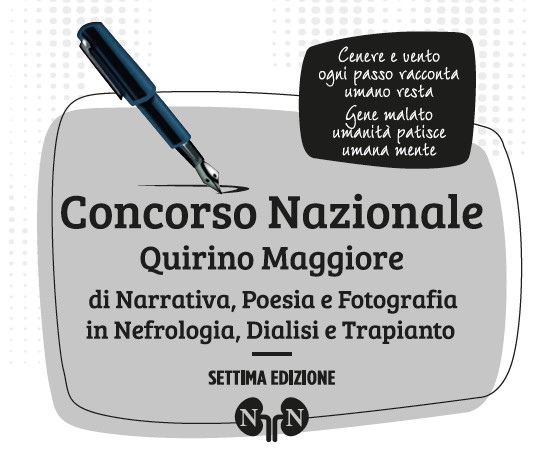Most read articles by the same author(s)
- David Mariani, Raffaele Picco, Francesca Capitanini, Alex Porciani, Marco Lombardi, Luigi Capotondo, Alessandro Capitanini, Habits in the time of Coronavirus , Giornale di Clinica Nefrologica e Dialisi: Vol. 32 No. 1 (2020): January-December 2020
- Franco Bergesio, Marco Di Girolamo, Giuseppe Curciarello, Anna Lucia Caldini, Santi Nigrelli, Anna Maria Ciciani, Marco Lombardi, Enrico Eugenio Minetti, Paola Parronchi, Calogero Cirami, Giacomo Laffi, Riccardo Ciuti, Chiara Cresci, Roberto Salerno, Give the planet a chance if we want our patients to have a future , Giornale di Clinica Nefrologica e Dialisi: Vol. 32 No. 1 (2020): January-December 2020
- Nicola Di Paolo, Marco Lombardi, In memory of Umberto Buoncristiani , Giornale di Clinica Nefrologica e Dialisi: Vol. 28 No. 2 (2016): April-June 2016
- Marco Lombardi, To Amedeo De Vecchi , Giornale di Clinica Nefrologica e Dialisi: Vol. 26 No. Suppl. 5 (2014): Dialisi peritoneale, Dialisi marginale?
- Marco Lombardi, Yuri Battaglia, GTND new column for 2015 , Giornale di Clinica Nefrologica e Dialisi: Vol. 27 No. 1 (2015): January-March 2015
- Marco Lombardi, Giornale di Techniche Nefrologiche & Dialitiche , Giornale di Clinica Nefrologica e Dialisi: Vol. 25 No. 1 (2013): January-March 2013
- Marco Lombardi, Introduction , Giornale di Clinica Nefrologica e Dialisi: Vol. 26 No. 4 (2014): October-December 2014
- Alessandro Toccafondi, Leonardo Mari, Umberto Caraccia, Silvia Lapini, Pietro Dattolo, Claudia Capanni, Stefania Polvani, Marco Lombardi, Project for a Pilot Study for a Narrative Nephrology Clinic: A Bio-Psycho-Social Approach to Chronic Kidney Disease , Giornale di Clinica Nefrologica e Dialisi: Vol. 32 No. 1 (2020): January-December 2020
- Marco Lombardi, Stefano Michelassi, Corrado Betterle, Knowing it for Detecting it: Addison Disease with Type 2 Autoimmune Polyendocrine Syndrome , Giornale di Clinica Nefrologica e Dialisi: Vol. 25 No. 1 (2013): January-March 2013
- Marco Lombardi, Foreword , Giornale di Clinica Nefrologica e Dialisi: Vol. 26 No. 2 (2014): April-June 2014











